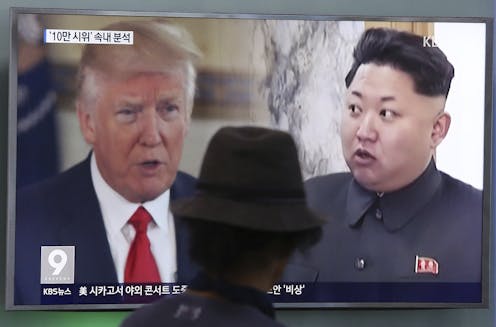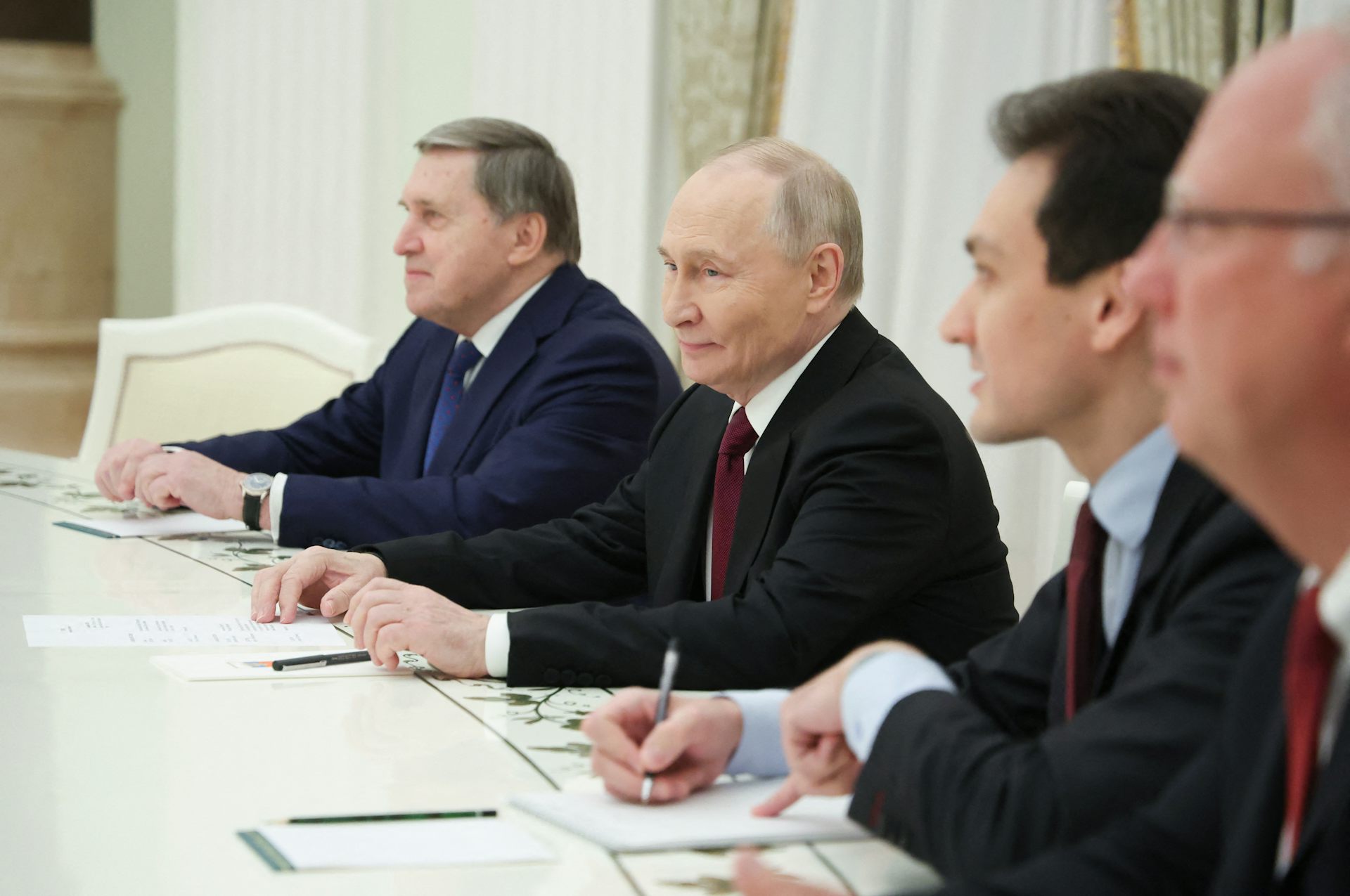Trump meets Kim Jong Un: 5 essential reads
What scholars know about the past, present and future of the US' relationship with North Korea, as the two country's leaders prepare to meet.

Editor’s note: The following is a roundup of stories from The Conversation’s archive.
In an unexpected development, President Donald Trump and North Korean dictator Kim Jong Un have agreed to meet and discuss improving relations.
Over the last year, the two country’s leaders have exchanged increasingly bitter and bellicose rhetoric as North Korea continued its development of long-range nuclear weapons, which the U.S. opposes. Trump called Kim “Little Rocket Man,” Kim called Trump a “mentally deranged U.S. dotard,” and both have threatened nuclear annihilation of the other side.
But it’s not necessarily nasty name-calling that got North Korea to issue Trump the invitation to meet. Years of sanctions imposed by the U.S. and the United Nations have isolated North Korea economically.
Here is a roundup of stories from our archives to help you sort the story behind the U.S.-North Korea conflict.
1. A brief history
North and South Korea were once a single country. They shared a common culture. But they’ve been at odds since the end of World War II, when the Korean Peninsula was divided in two, with South Korea controlled by the U.S. and North Korea controlled by the Soviets.
“Amid the growing Cold War tensions between Moscow and Washington, in 1948, two separate governments were established in Pyongyang and Seoul,” writes East Asian scholar Ji-Young Lee. Lee also quotes recent polls reporting that more than half of South Koreans believe that reunification with North Korea “is necessary.”
2. Everybody get together
Since Korea was divided into two countries relatively recently, is there a chance they could join together again?
“History suggests such efforts to reunite the peninsula as a single country often don’t go far,” Lee writes.

In a second essay, Lee details the number of times the two countries have tried to achieve national unity and how each has failed. It turns out that each of these efforts has floundered through a combination of aggressive moves by each side, internal political conflicts and pressure from allies across the globe.
Now, though, writes Lee, “current South Korean President Moon Jae-In is more open to … pursuing engagement. … This may be a game changer. Without a doubt, he is much more proactive about creating opportunities for inter-Korean reconciliation.”
3. The mind of a ‘smart cookie’
The North Korean leader Kim Jong Un, who was called a “smart cookie” and other less complimentary things by President Donald Trump, is a complex man who has assassinated political rivals and, according to human rights advocates, runs prison camps where political prisoners are raped and starved.
When Trump meets him and becomes the first U.S. president to ever hold talks with a North Korean leader, it might help if he understands something about Kim. “I hope he’s rational,” Trump said last April.
Scholar Stephen Benedict Dyson provides a response to Trump’s statement. Dyson writes that in his research on political leaders, he found that “different people have different definitions of rationality. The core question – "What is my best move?” – is often answered by a leader’s idiosyncratic beliefs, rather than by an immediately obvious logic of the situation as seen by external observers.“
So if the United States want to influence Kim, "Trump and his advisers must first understand how we look to the North Korean leader, peering at us from his very particular vantage point,” writes Dyson.
4. It’s not only a nuclear threat
Kim Jong Un doesn’t just have an army of soldiers and a growing nuclear arsenal at his disposal. He also has an army of cyber warriors.
Those hackers, writes Dorothy Denning of the Naval Postgraduate School, have used their digital skills to steal money to fund the government and launch cyberattacks that disable online services and destroy the data on computer disks.
5. Around the corner
Let’s say Trump and Kim meet. But then, like so many summits between adversaries, it fails to produce an agreement.
What’s next, war?
“The temptation to resort to military force could ratchet up quickly,” scholars Ronald Sievert and William Norris write.
There’s an alternative, say Sievert and Norris: international arbitration. It’s worked in the past with seemingly intractable adversaries.
The scholars detail several of those crises, going back to the mid-19th century, and describe how the countries were brought to the table to work out their conflicts peacefully.
Read These Next
FDA claims on COVID-19 vaccine safety are unsupported by reliable data – and could severely hinder v
The agency’s plan to change the well-established process for safety testing vaccines is not realistic.
Lasting peace in Ukraine may hinge on independent monitors – yet Trump’s 28-point plan barely mentio
Building in safeguards, including third-party monitoring, can increase the chances of a successful peace…
A hard year for federal workers offers a real-time lesson in resilience
During a year of extraordinary uncertainty, workers built resilient networks within and across boundaries…






